Published: December 31, 2020 • Updated: September 22, 2025
Noticing water in your crawl space can be alarming. While a little moisture after a heavy rain may be normal, persistent dampness or standing water under a house often signals a more serious problem that can compromise the structural integrity of your home.
In this guide, we’ll explore eight common causes of water in crawl spaces—and how to fix them for good before they lead to mold, rot, or structural damage.
Is Water in a Crawl Space Normal?
Finding water in your crawl space is always a red flag. Even in homes with a dirt floor or a vented crawl space, moisture should not linger. If dampness lasts more than 24 hours, it often points to drainage issues, plumbing leaks, or a high water table that can weaken your foundation over time.
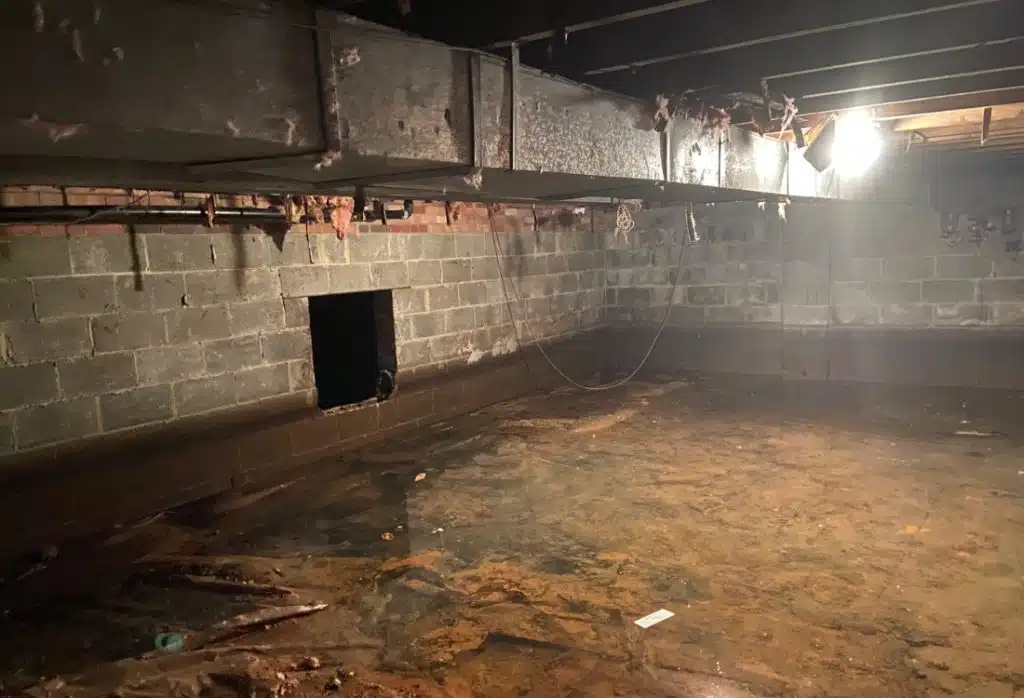
Here are some common warning signs that water in your crawl space isn’t normal:
- Puddles that don’t dry up after a day or two
- Musty or moldy odors coming from below
- Sagging floors or soft wood joists
- Increased humidity inside your home
Is it normal? No — if you’re noticing these issues, it’s not “just a little water” — it’s a sign your crawlspace may already be compromised. Learn more about damp crawl space symptoms and schedule a professional inspection to confirm the cause.
8 Causes of Water in Crawl Spaces (And How to Fix Them)
Crawl spaces can be vulnerable to moisture, and understanding what causes water to get inside is the first step to protecting your home. From drainage issues to plumbing leaks, several factors can lead to unwanted moisture. Let’s look at the most common causes of water in crawl spaces and how to fix water damage before it creates bigger problems.
1. Poor Grading Around the Foundation
Improper landscape grading is one of the most frequent reasons for standing water in crawl space. If the soil around your home slopes toward your house rather than away from it, rainwater will naturally pool near the crawlspace wall — and eventually find its way into your crawlspace.
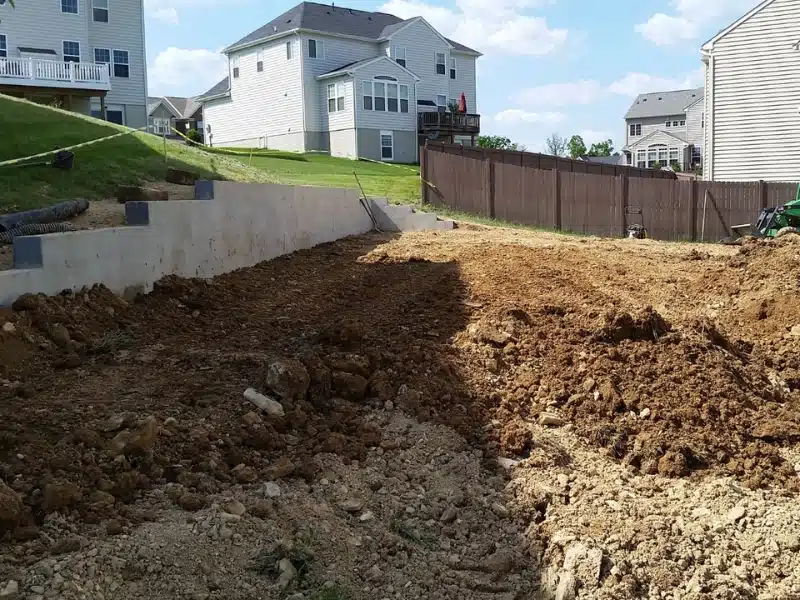
How to Fix
- Inspect grading every spring to ensure winter weather hasn’t eroded the slope.
- Regrade to create a 6–8 inch slope over the first 10 feet away from the foundation.
2. Clogged Gutters or Short Downspouts
Your gutter system is designed to carry rainwater away from your house, but if it’s clogged or you have downspouts that discharge water too close to the house, it can lead directly to water pooling in a crawl space after heavy rain.
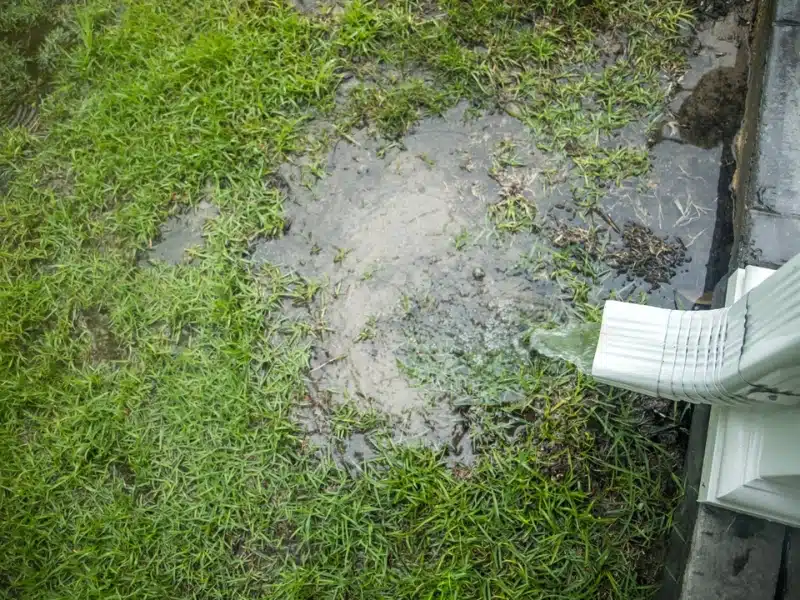
How to Fix
- Clean gutters at least twice per year
- Add downspout extensions to carry water 6–10 feet away from your foundation
Consider underground yard drainage systems if pooling persists
3. High Groundwater or Water Table
In many regions in Northern Virginia, especially during wet seasons, the groundwater in a crawlspace can rise above the foundation level, pushing moisture through the soil.
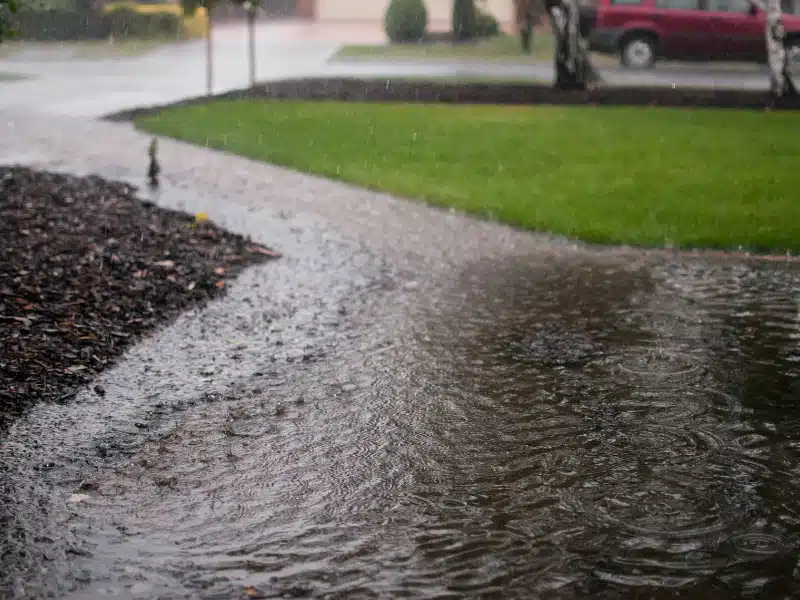
How to Fix:
- Install a French drain system around your home
- Add a sump pump inside your crawlspace to redirect rising water
- Consider encapsulation with a vapor barrier and a dehumidifier to block further moisture
4. Foundation Wall Cracks
Even hairline cracks in foundation walls create pathways for water intrusion. Over time, hydrostatic pressure forces water through these openings, creating challenges for wet crawlspace repairs.
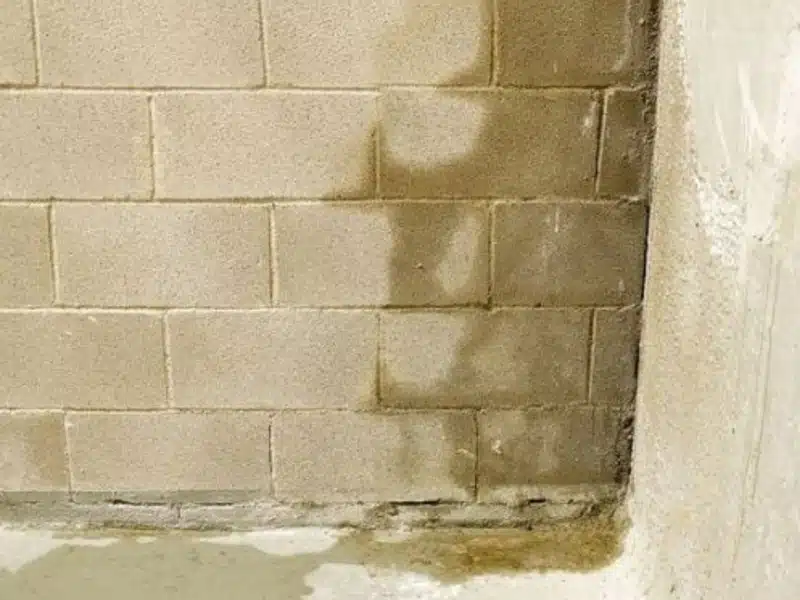
How to Fix
- Inspect foundation walls regularly and seal cracks promptly.
- Combine crack repair with interior drainage to relieve pressure.
5. Undersized or Failed Drainage Systems
Shallow or clogged perimeter drains can’t handle heavy storms, resulting in flooded crawlspace conditions.
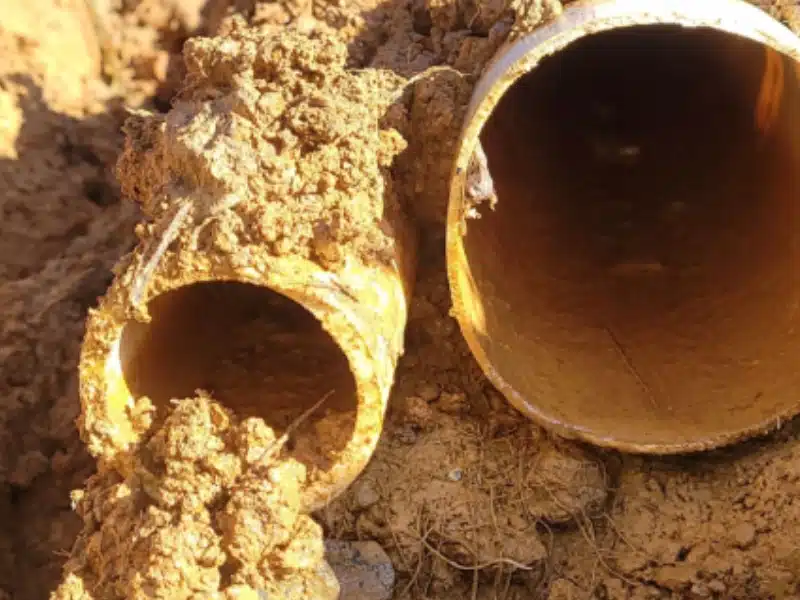
Prevention Tips
- Upgrade to larger pipes or add auxiliary drainage lines.
- Include accessible cleanouts for easier maintenance.
6. Plumbing or HVAC Leaks
Leaky pipes, dripping water heaters, or HVAC condensate lines can create constant dampness that mimics groundwater problems. These leaks may also impact plumbing, electrical wirin,g and nearby heating and cooling systems inside the crawl space.
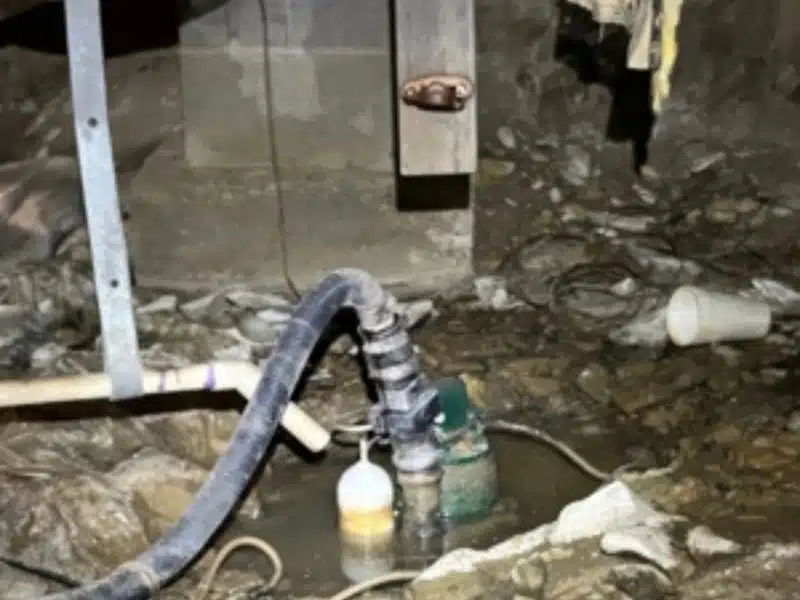
Prevention Tips
- Have plumbing and HVAC lines checked regularly.
- Add drip pans and shutoff valves for quick leak control.
7. Overwatering or Irrigation Near the House
Sprinklers or hoses left running next to the foundation can saturate the soil and cause water to seep under the home’s foundation.
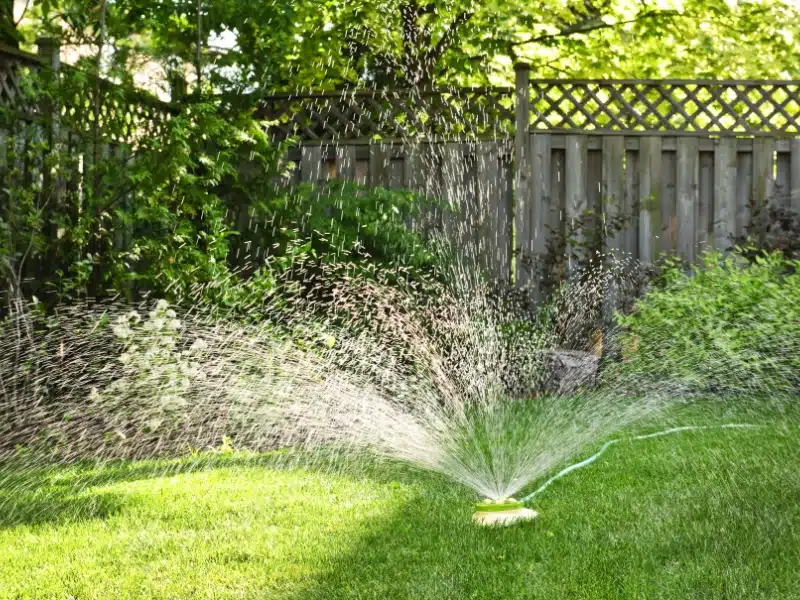
Prevention Tips
- Keep a 3–5 foot dry zone around the foundation.
- Redirect sprinkler heads and reduce watering time.
8. Soil Settlement or Low Spots
Soil erosion and settlement can create low areas around the foundation where rainwater collects, pools, and seeps inward.
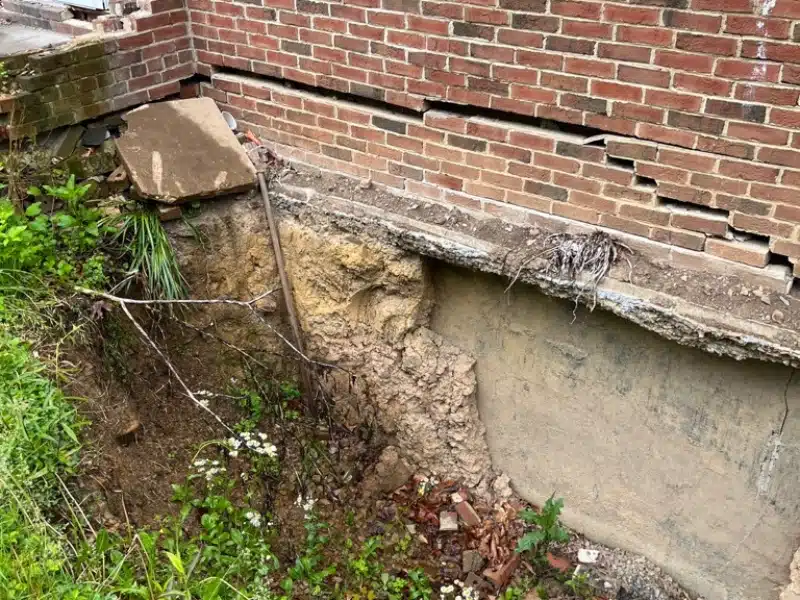
Prevention Tips
- Backfill and compact soil where it has settled.
- Add swales or landscape edging to divert water.
After Heavy Rain vs. Groundwater: How to Tell the Difference
One of the most important steps in solving water in a crawl space is identifying the source — is it rain runoff or groundwater?
- After heavy rain: Puddles appear quickly and dry within a day or two.
Likely cause: poor grading, clogged gutters, or short downspouts. - Persistent groundwater: Water seeps up even in dry weather and may collect under a vapor barrier.
Likely cause: high water table or underground spring.
Knowing the difference helps your foundation specialist apply the right crawl space solution — from improved drainage to sump pump installation or full encapsulation with a vapor barrier.
What Happens If You Ignore Water in Your Crawl Space
Leaving crawlspace moisture damage untreated can turn a small issue into a serious and costly repair. Moisture spreads through the structure of your home and the air you breathe, creating long-term risks.
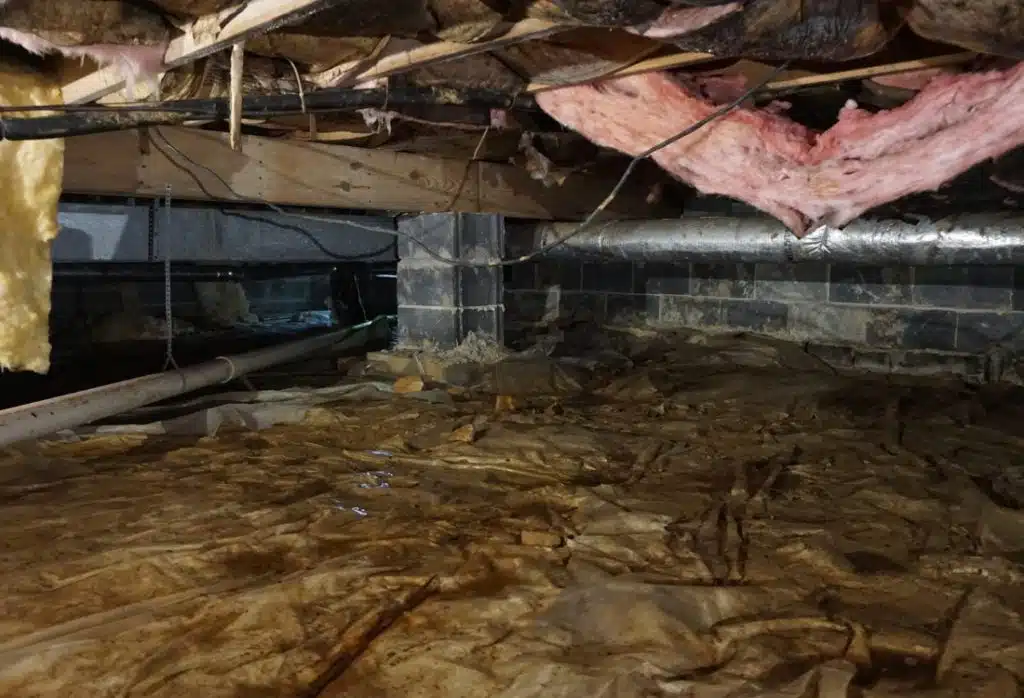
Here’s what can happen if you ignore crawlspace water problems:
- Mold and mildew growth, lowering indoor air quality.
- Wood rot and pest infestations like termites and carpenter ants.
- Rising energy bills from damp insulation and poor air control.
- Structural weakening of beams, joists, and flooring.
- Water intrusion upstairs, leading to damage in living areas.
Did you know? Crawl space water damage repairs can cost 5–10 times more than preventive waterproofing solutions like sump pumps, drainage, or encapsulation. Acting now saves money and protects your family’s health.
Don’t Wait Until It’s Too Late — Fix Water in Crawl Space for Good
Water in your crawl space isn’t just annoying — it’s a warning sign. From mold and mildew to foundation damage, the risks grow more expensive the longer you wait.
At LUX Foundation Solutions, we help homeowners throughout Northern Virginia, Shenandoah Valley, North Central Virginia, West Virginia, and surrounding areas identify the source of crawlspace damage and stop it at the root.
Our team will inspect your crawlspace, identify the source, and recommend the most effective crawl space repair solutions — whether it’s grading, sump pumps, or full encapsulation.Call us today at 540-508-8587 to schedule your free crawlspace assessment — and take the first step toward a dry, healthy home.
Frequently Asked Questions About Crawl Space Water
How do I get rid of water in my crawl space?
To get rid of water in a crawl space, first remove any standing water with a sump pump or wet vacuum. Then fix the source of the problem — common solutions include regrading soil, adding downspout extensions, sealing foundation cracks, or installing a vapor barrier and encapsulation system. A crawlspace professional can help ensure the moisture problem doesn’t return.
Is a little water in a crawl space normal?
Finding water in your crawl space after heavy rain is never considered normal. A small amount of moisture may appear—especially in older homes or those with dirt floors—but it should dry out within 24 hours. If water lingers for longer, it usually indicates drainage problems, leaks, or a high water table that requires professional attention.
Learn the signs of a damp crawl space so you know when it’s time to act.
Why is there water in my crawl space after heavy rain?
Water in a crawlspace after rain is often caused by poor grading, clogged gutters, or downspouts that discharge too close to the foundation. Redirecting runoff away from the home usually fixes the problem.
How can I tell if groundwater is causing crawl space water?
If you notice water in your crawlspace even during dry weather, or if a sump pump runs continuously without recent rain, the issue is likely a high groundwater level or water table pushing moisture into the foundation.
Who to call for water in the crawl space problem?
Call a foundation repair specialist — not a plumber, unless it’s a confirmed pipe leak. A foundation expert will diagnose the moisture source, check for structural damage, and recommend solutions like sump pumps, encapsulations, or drainage systems.
Our expert team at LUX specializes in crawlspace waterproofing and repair. Book a free crawl space evaluation now.
